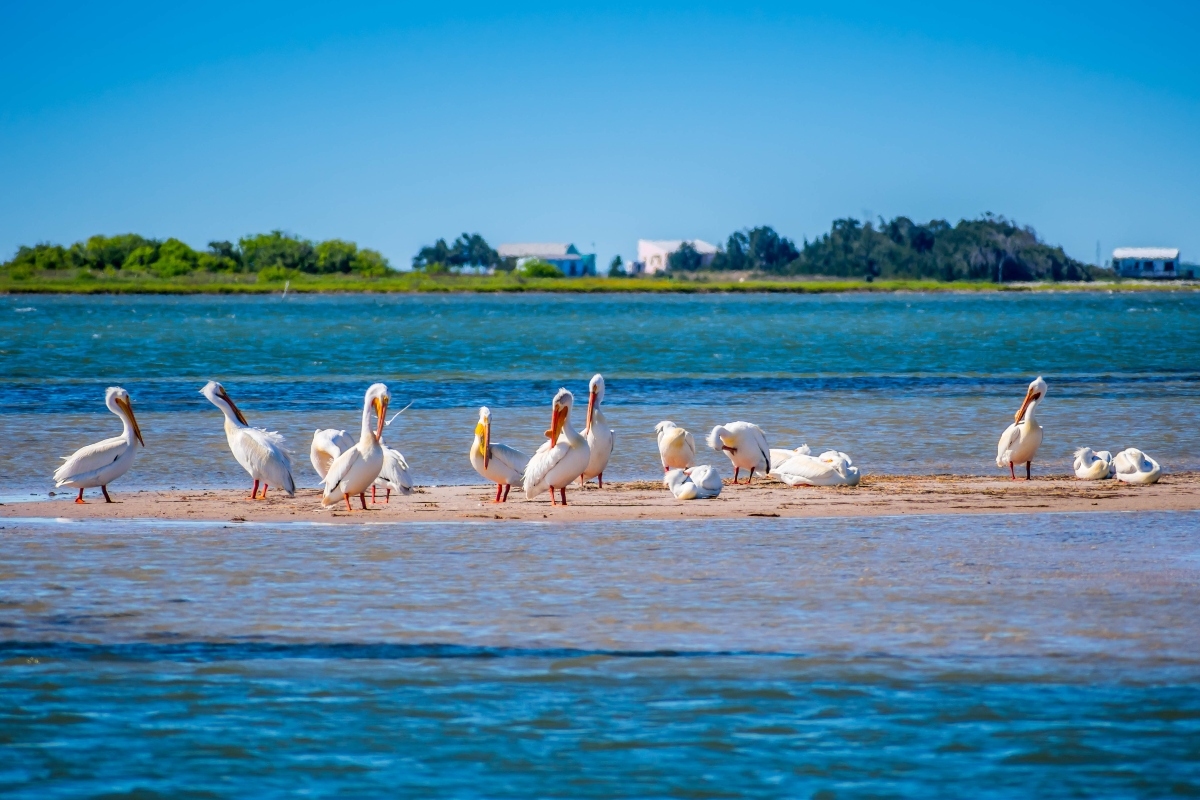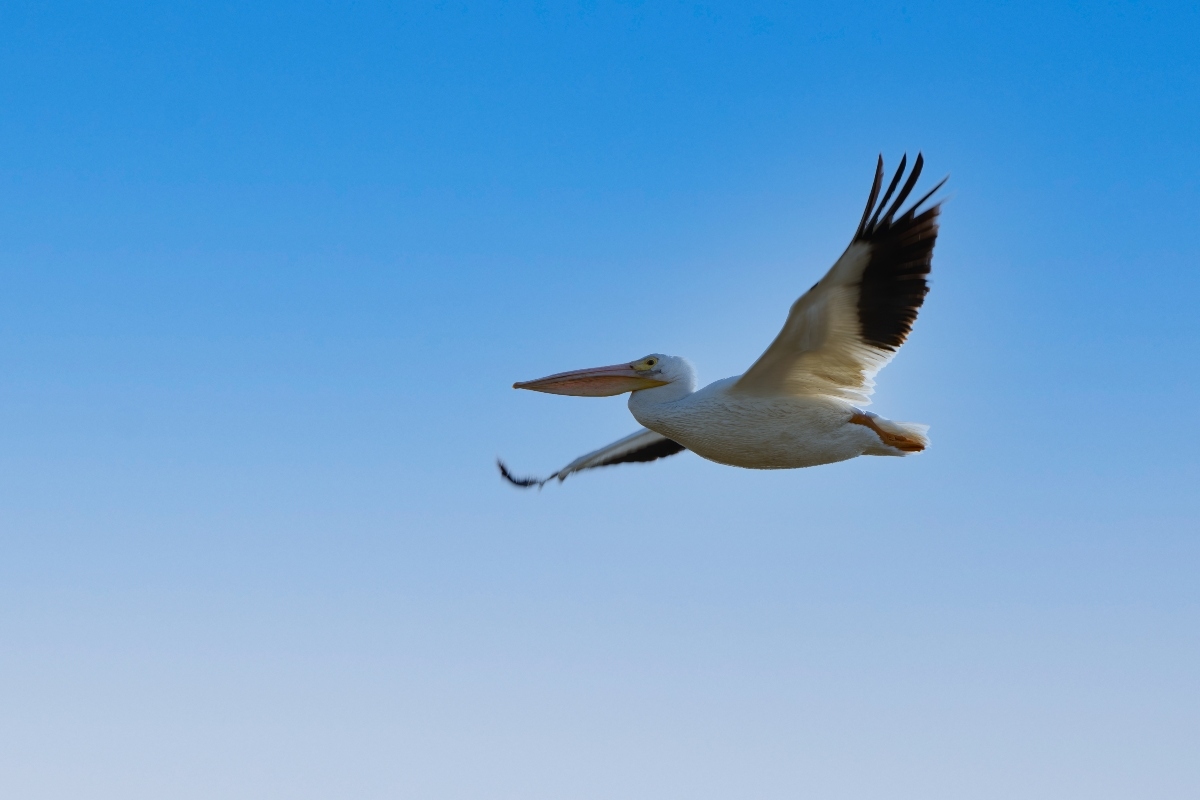The American White Pelican, scientifically known as Pelecanus erythrorhynchos, is a monumental sight against the sprawling skies of North America. With a wingspan that can exceed 9 feet, these pelicans are one of the continent’s largest bird species, elegantly combining power and grace in their aerial and aquatic endeavors.

Distinguished by their predominantly white plumage, contrasted with black flight feathers, the American White Pelican is a symbol of purity and freedom to many who observe their impressive soaring flights. Their large, elongated bills, equipped with a distinctive, expandable pouch, facilitate their fishing exploits, which differ notably from their brown pelican relatives who dive for their food.
Unlike their coastal cousins, American White Pelicans favor inland and freshwater habitats, often found residing on isolated islands in lakes and wetlands across the United States and Canada. During the breeding season, these pelicans develop a unique, plate-like growth on the upper part of their bill, which is shed after mating, a remarkable yet ephemeral aspect of their physical appearance.
Predominantly piscivorous, these pelicans work collaboratively to herd fish toward the shallows, skillfully scooping up their prey with their expansive bill pouches. This collective foraging strategy exemplifies their social nature and the intricate dynamics within their flocks.
Migration is a significant aspect of the American White Pelican’s lifestyle, with remarkable journeys between their breeding grounds in the north and their wintering habitats in the southern United States and Mexico. These migrations embody a delicate ballet in the sky, where their V-formations and synchronized flapping present a mesmerizing display of coordination and collective perseverance.

Their nesting colonies, often situated on isolated islands, provide a safe haven from predators and a communal environment for raising their young. With both parents sharing responsibilities for incubation and feeding, American White Pelicans demonstrate a collaborative spirit that permeates through various aspects of their lifecycle.
Although they predominantly reside away from the hustle and bustle of human activity, American White Pelicans are susceptible to habitat disruption and pollution, which pose threats to their nesting and feeding grounds. Thus, they emerge as gentle giants who remind us of the need to protect and preserve the delicate balance within our ecosystems.
In both Native American symbolism and popular culture, the pelican often embodies self-sacrifice, teamwork, and renewal. The American White Pelican, with its serene demeanor, cooperative spirit, and impressive physicality, offers a glimpse into the wonders of avian life and the awe-inspiring phenomena that unfold in the natural world.